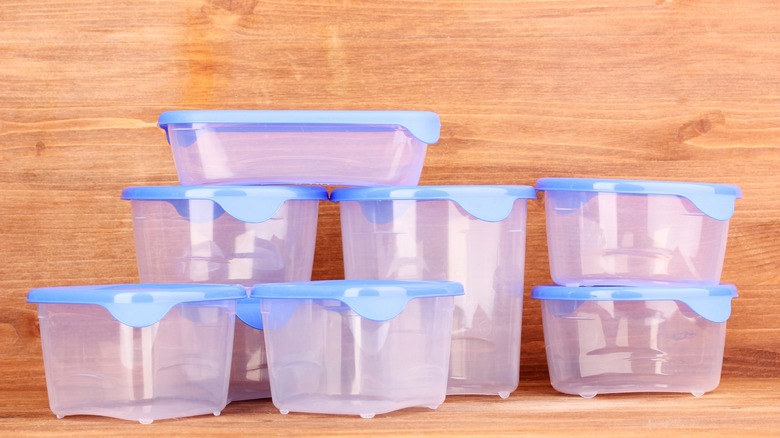Why You Should Add Plastic Food Storage Containers To Your List Of Lawn Essentials
Electric cords are an essential tool to illuminate stunning patio string bulbs or to give life to a power tool. That being said, many different natural variables can impact the safety and risk of working with electrical outlets and cords outdoors. Weather conditions, including torrential downpours and heavy, wet snowfall, can damage your cords and cost you a lot to replace them. Using a plastic food storage container, a common household item likely already in your kitchen pantry, can secure and protect your outdoor electrical cords from the harsh and often unpredictable elements.
Today, any cord that plugs into an electrical outlet is wrapped with insulation. This safety measure is often reinforced with materials such as plastic and rubber because they do not allow an electrical current to flow freely, thus reducing the risk of shock. Insulation typically covers an entire electrical cord except for its two exposed metal prongs, or in the case of an extension cord, the prongs on one end and holes on the other. This meeting point is not insulated, so it's vulnerable to outside threats — which is where the plastic food storage containers come in.
How to transform your containers
First, take stock of how many plastic containers you will need based on the number of cord junctions you have exposed. You're going to want to purchase reusable food storage containers for this hack. They are cheap without wavering on durability, and you can find them in many different stores and online. Plastic containers are insulators rather than conductors, meaning that if water does get in, the material will help stop an electrical current from traveling farther and potentially cause an electrical fire. It will also prevent any moisture from tripping your electrical sources' Ground-Fault Circuit Interrupter (GFCI). A GCFI is a safety tool built into wiring like extension cords and home outlets that stops electricity in fractions of a second if water poses a risk.
Once you have your containers, use a sharp precision knife to cut a rectangle on each side. The holes should be just large enough to allow a cord to slip through and connect in the middle of the container. Then, drill a few ¼-inch holes in the bottom of the plastic box to help any liquids drain out and into the ground. Finally, set up your electrical cords as you normally would, slipping the connecting pieces into each container and sealing each lid securely. When you're done with them, make sure the containers are completely dry and store them in your garage or shed alongside your extension cords for easy access the next time you need them.


